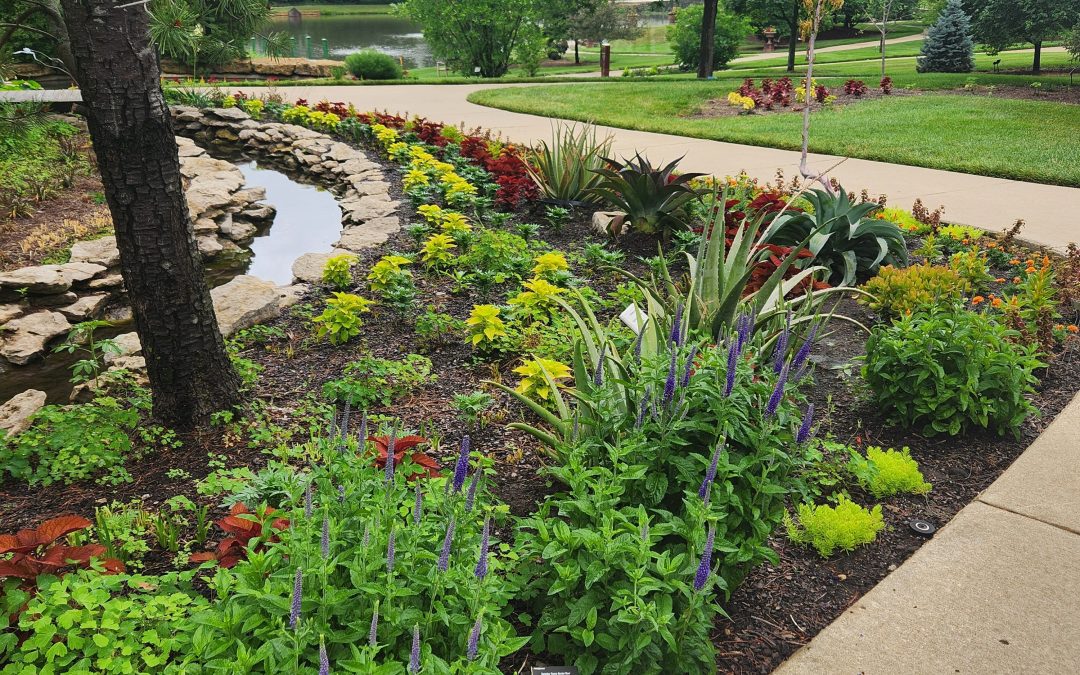
by Donna Arnold | Dec 11, 2025
Winter Bliss and Climate Challenges in North Florida Gardens
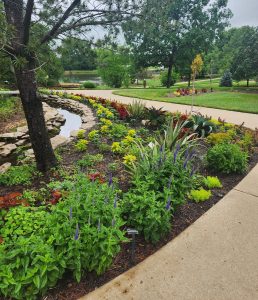
Gardening is far more than a pastime, it’s an endeavor that demands patience, skill, and dedication. Every plant requires careful attention to thrive, and every gardener knows the challenge of protecting their landscape against nature’s shifting moods.
In North Florida, winters from December through February are typically mild, offering residents the chance to cultivate cool-season vegetables, hardy ornamentals, and lush greenery that brighten homes even in the colder months. These gardens are more than decoration; they are living investments in beauty, wellness, and community pride.
Yet, the increasing instability of seasonal patterns has thrown gardeners off balance. Sudden frosts, unexpected heat spikes, and shifting rhythms test both resilience and creativity. What once felt like a predictable cycle now requires constant vigilance, as climate change reshapes the very environment in which these gardens grow. For North Florida residents, tending a garden is not just about nurturing plants, it’s about nurturing joy, identity, and a connection to place, even as the climate itself becomes more uncertain.
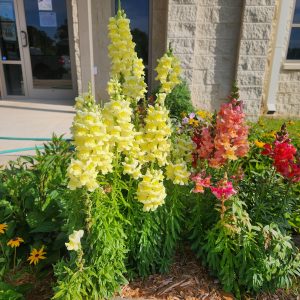
Photo credit: Donna Arnold,FAMU Extension.
The Growing Challenge of Climate Change
In recent years, gardeners have faced out-of-season frosts that damage cold-sensitive plants such as citrus, hibiscus, and tropical ornamentals. Unlike commercial growers with greenhouses, most homeowners lack protective infrastructure, leaving their landscapes exposed. The financial loss of damaged plantings can be significant, but the emotional toll of watching cherished gardens succumb to sudden freezes is equally profound.
Climate change intensifies these challenges. Stronger cold fronts and occasional winter heat spikes disrupt plant growth, weakening resilience and reducing vitality. Homeowners often resort to improvised measures, blankets, plastic sheeting, or makeshift covers, that provide only temporary protection. Without specialized forecasting tools, residents rely on local news or apps, which may overlook microclimate variations across neighborhoods.
Weather vs. Climate: Why It Matters
It’s important to distinguish between weather and climate.
- Weather refers to the day-to-day conditions, temperature, rainfall, humidity, and more, that we experience locally.
- Climate is the long-term average of these conditions, measured over seasons, years, or even decades, across regions or globally.
Florida, for example, has a wet season and a dry season, but rainfall within those periods can vary greatly from day to day. While climate patterns help us anticipate seasonal trends, the unpredictability of weather events, like sudden frosts or heat spikes, creates challenges for gardeners. Understanding this distinction helps residents prepare for short-term weather swings while adapting to long-term climate shifts.
Adapting for Resilience
Climate change is no longer a distant concept; it’s a daily reality for North Florida gardeners. To adapt, communities must embrace:
- Education programs on cold protection and plant selection.
- Affordable protective solutions like frost cloths and portable covers.
- Resilient landscaping strategies, including native plants better suited to fluctuating conditions.
For further reading on climate impacts and gardening adaptation in Florida, see: Cold Protection for North Florida | UF/IFAS Extension; Climate Change and Florida’s Native Plants – Florida Wildflower Foundation; Surviving Winter Storms: Smart Gardening; Frost in the Panhandle? Practical Tips for Protecting Your Garden | Gardening in the Panhandle Practices for Northern Florida Gardens
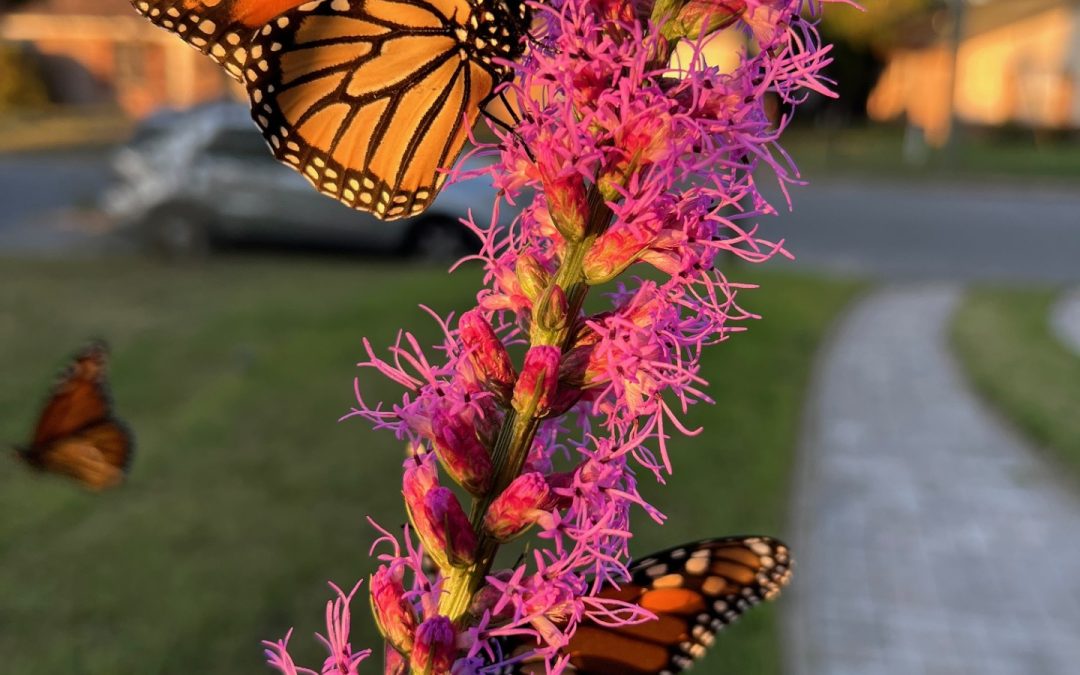
by Carrie Stevenson | Nov 6, 2025
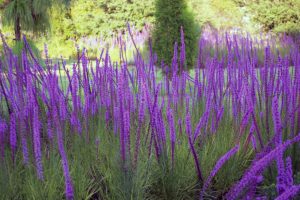
A spectacular array of blazing star in bloom. Photo credit: Troy Springer, Florida Wildflower Foundation
Walking through a northwest Florida wildflower prairie in autumn, the star of the show is Liatris. Known as dense gayfeather or blazing star, this tall (up to 7’!) stunner of a plant is covered up with clusters of small purple flowers. The flowers are are composed of tiny, frilly five-petaled florets. Each cluster may have groups of up to 18 flowers at a time, crowding the stalk with color.
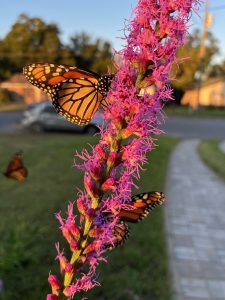
Migrating monarchs feed on blazing star in late fall. Photo credit: Whitney Scheffel
Before blooming, the spiky grasslike structure grows upright and produces a series of dozens of green leaflets, similar in form to rosemary.
While delicate in appearance, the blazing star is a hardy plant adapted to a wide range of habitats. Some varieties can grow in the pure sand of beach dunes and scrub, while Liatris spicata thrives in the soggy wet soils of bogs and pine flatwoods. The species is known for attracting bees, butterflies, and hummingbirds, so it makes a great addition to a pollinator garden. The flowers perform best in full sun.
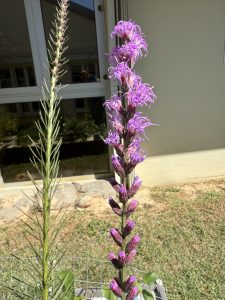
Side-by-side, the bottlebrush-like blazing star plant before and after blooming. Photo credit: Carrie Stevenson, UF IFAS Extension
Blazing star is particularly impressive in a large group, so you can plant dozens together (by seed or container) for a beautiful effect. After blooming deep purple this time of year, they’ll turn a goldish bronze that adds to the interesting fall color of a garden. Liatris will also re-seed every year after dying back in the winter.
There are many plants native to the United States known commonly as colic root, including blazing star. This nickname arose from its traditional medicinal use treating stomach cramps. Additional uses of a tea made from the plant were used for everything from sore throats and kidney issues, while an incense made from dried roots was burned for sinus relief.
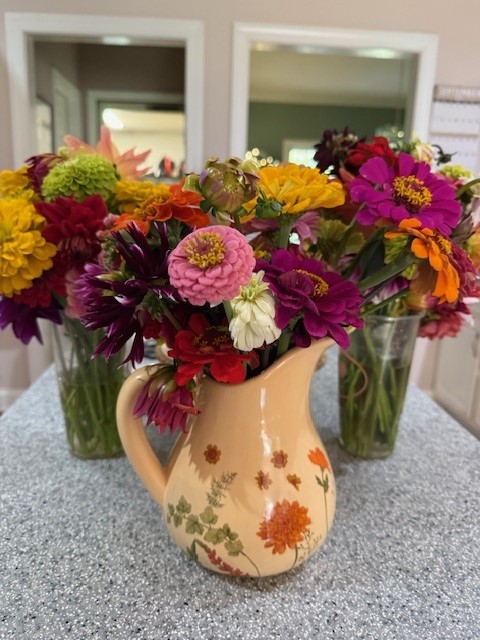
by Julie McConnell | Oct 30, 2025
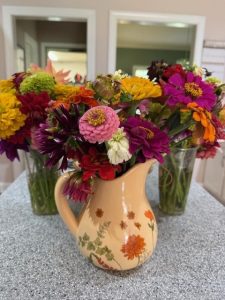 Do you enjoy cutting flowers from your garden to enjoy indoors?
Do you enjoy cutting flowers from your garden to enjoy indoors?
Have you ever considered turning that passion into a small business opportunity or earning a little cash to help to support your flower habit?
If you answered yes to these questions, then you should plan to attend the “Cut Flower 101 Growing for Fun & Profit” workshop on November 14, 2025, in Live Oak!
Flower farms are popping up across the state on small parcels of land, including urban settings. Social media posts of flower growers look like it’s all blooms and bucks, but there are a lot of factors that need to be weighed before jumping into any agricultural endeavor.
Learning what, when, and how to grow specific flowers are key factors to developing a successful grow plan. Options to consider include bed preparation for raised beds, crates, or in-ground production. Should you direct seed or grow transplants? When do you start the seeds and when do you put the seedlings outside? How to prepare for adverse weather conditions? Which types of irrigation and fertilization methods should you use? And of course, how much money is needed to invest for the best returns while minimizing risk?
All those choices may seem overwhelming, but you don’t have to figure it out on your own! Spend a day at the UF/IFAS Small Farms Academy at the North Florida Research and Education Center Suwanee Valley in Live Oak, Florida for an introduction to small scale cut-flower production.
Sidenote – Even if you have no inclination of starting a business, but just want to grow cut flowers you can enjoy you are welcome to attend!
Pre-registration is required by purchasing a ticket at https://www.eventbrite.com/e/cut-flower-101-tickets-1738264990379
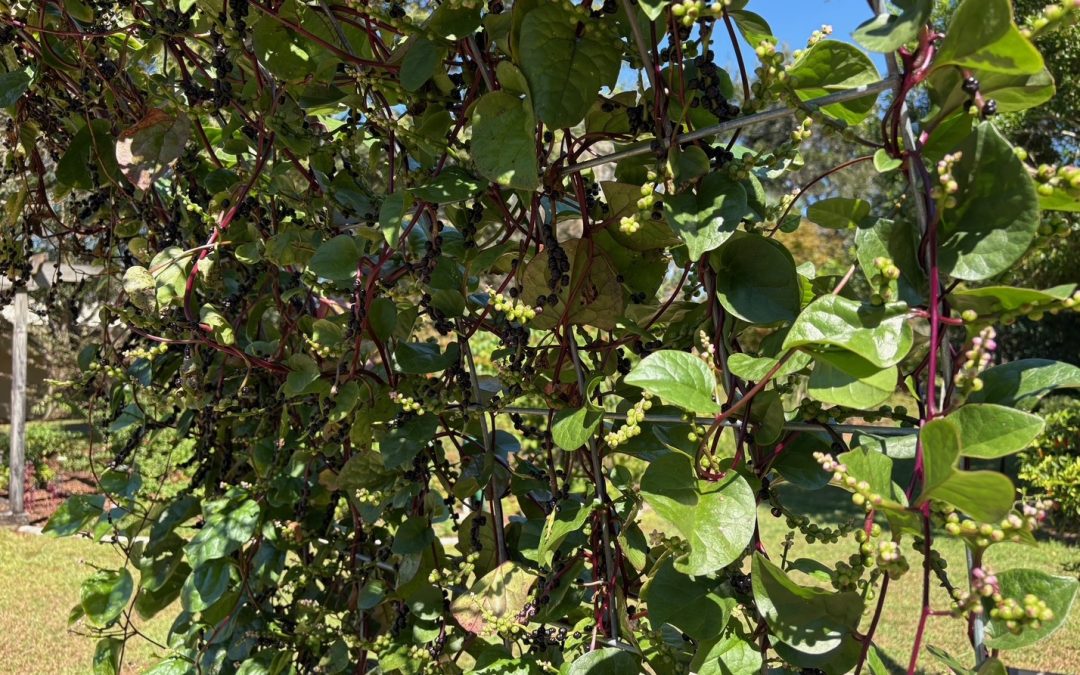
by Beth Bolles | Oct 17, 2025
Saving seeds is a wonderful garden activity that gives us both a sense of pride in our gardening skills and helps us save a few dollars on new seeds.
Malabar spinach is one of our heat loving vines that grows well until frost and produces abundant seed. If you are looking for a leafy green spinach substitute, Malabar spinach does very well in the summer garden. We had a late start on planting our Malabar spinach in the Escambia Extension garden so the seeds are now ripening. This is the perfect plant for saving seeds.
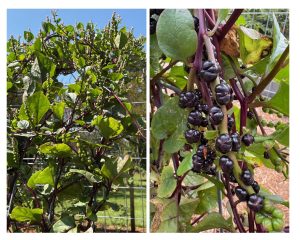
Vines growing along with mature fruit. Photos by Beth Bolles UF IFAS Extension Escambia County.
Malabar spinach has plenty of fruit for you to save seeds for yourself and friends. When mature, fruit will be dark purple and you may easily pull the fruit off stems into a small container. This is definitely a practice that requires gloves unless you want to have your hands stained purple for a while.
Your next step is to lightly press on the fruit while running them under water. Have a strainer underneath to catch the fruit. You are just trying to loosen some of the pulp, not remove every bit. Fill a small jar 3/4ths with water and then add your fruit. Let this sit on a counter for a few days. You may change out the water as needed. This is the step that loosens the remaining pulp from around the seeds.
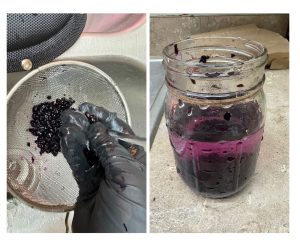
Loosening pulp from seeds and then soaking in water. Photos by Beth Bolles, UF IFAS Extension Escambia County.
After several days in the jar, pour the jar liquid through a strainer and wash over it with clean water. This removes the final bits of pulp. Place a paper towel or cloth on the counter and lay out your cleaned seeds. They will need to air dry for a couple of days. Keep seeds away from a heat source and out of the sun.
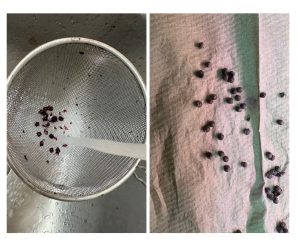
Final rinse of seeds and drying on towel. Photos by Beth Bolles, UF IFAS Extension Escambia County.
Once dry, you are ready to package your seeds for next season’s planting or gifts for friends. You may use a paper envelope or small plastic bag. You may also add seeds to a jar, close it tightly, and put in the refrigerator. Label your package with the plant and date because you will not remember those details later.

by Ray Bodrey | Jul 20, 2025
Sunflowers, Helianthus spp., are a great choice for gardeners who are looking for some cheerful color in their landscape. Here in Florida, we have the main ingredient for success, lots of sunshine!
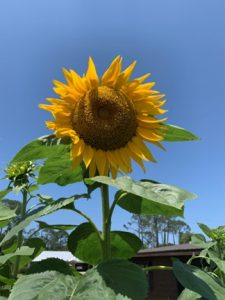
Skyscraper Sunflower. Credit: Ray Bodrey, UF/IFAS Extension.
Sunflowers are short-lived annuals. A good average time between planting and bloom is roughly 65 days. You can typically plant sunflowers in Florida beginning in late winter until early fall. Only the coldest months are the issue, and for most years that’s only a couple of months for us. Sunflowers can be planted almost anywhere there is full sun. The major selling point to plant sunflowers is of course the impressive blooms (figure 1). These yellow to sometimes orange or red petaled flowers develop a central seed disc, with most varieties having approximately an 8” diameter in growth.
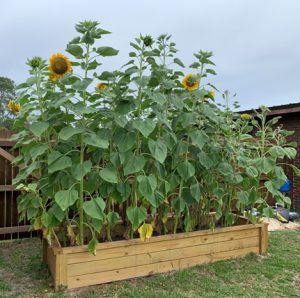
Skyscraper sunflowers planted in close pattern. Credit: Ray Bodrey, UF/IFAS Extension.
As for planting, you may choose to plant narrow rows and close seed spacing in order to cull less preforming plants later. A final row and seed spacing of 2’-3’ is recommended for full height and development of most varieties. However, you may choose to plant in a bed, using a close pattern as seen in figure 2. In any event, sunflowers are easy to propagate by seed and are very low maintenance. However, powdery mildew and spittle bugs can be a nuisance. A general garden fungicide and insecticide will help if problems occur.
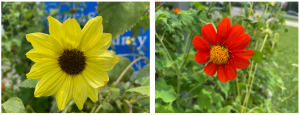
Sunflowers, Helianthus spp. Credit: Ray Bodrey, UF/IFAS Extension.
Sunflowers are available in many varieties, which consists of different color blooms and plant sizes. These sizes range from dwarf (1’-3’) to tall (10’-15’) varieties (figure 2). You may wish to stake taller varieties at some point, as some plants will tend to lean with no wind break in place. Here’s a few gardening variety common names to look for: sunbright, sonja, sunrich lemon or orange and autumn beauty. Seed companies also have mixes available in packets. For tall plants, mammoth or skyscraper varieties exist.
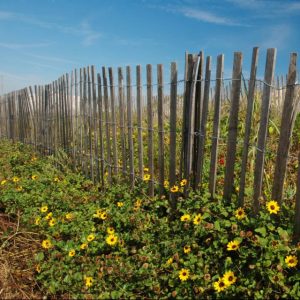
Beach sunflower. Credit: Ralph Mitchell, UF/IFAS Extension.
If you are fond of the sunflower bloom and looking for a groundcover, there are a couple of native perennials that fit this category. Beach sunflower, Helianthus debilis or swamp sunflower, Helianthus angustifolius, are groundcovers/ornamentals for landscapes and thrive in dry, hot climates and in a range of soil types. They also are great pollinator attractors.
For more information, contact your local county extension office. Happy Gardening!
Supporting information for this article and links to other publications can be found at the UF/IFAS Gardening Solutions website: https://gardeningsolutions.ifas.ufl.edu/plants/ornamentals/sunflowers.html
UF/IFAS Extension is an Equal Opportunity Institution.
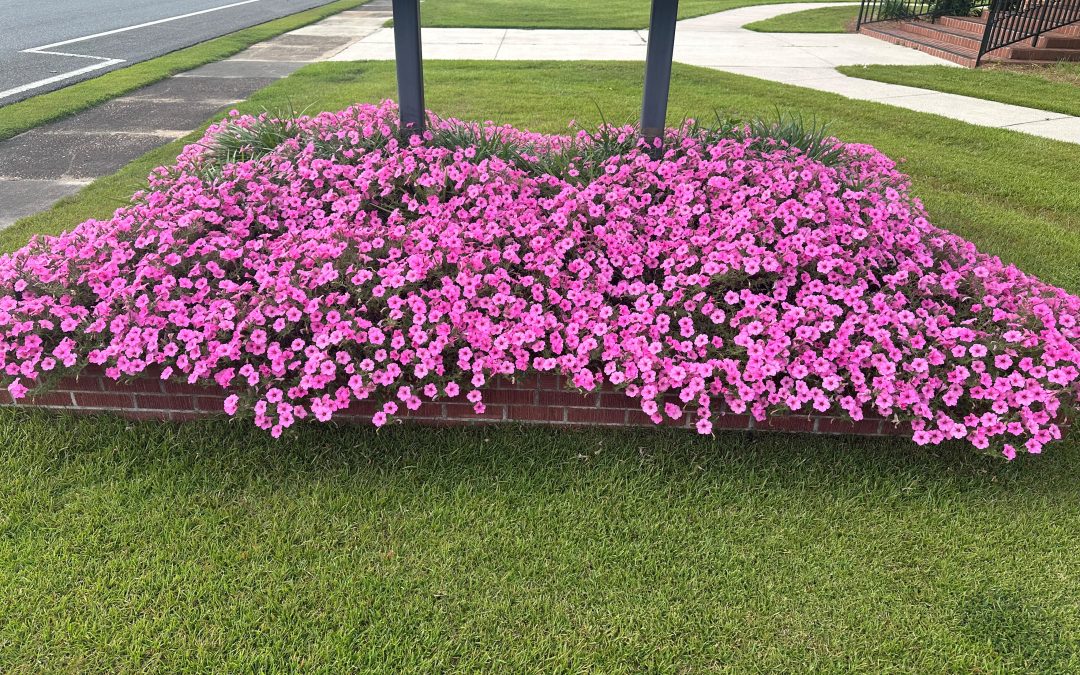
by Daniel J. Leonard | Jul 11, 2025
Normally, when one thinks of flowers that can take Florida’s summer heat, Petunia isn’t the first species that comes to mind, certainly not for me. For our northern neighbors, Petunias are one of the most popular summer bedding plants; their warm days and cool summer nights are perfect for Petunias. But, in the deep south, we are forced to grow Petunias in the cool months before the summer heat melts them. However, with the introduction of Wave Petunias back in 1995, the idea of a heat tolerant hybrid Petunia that could extend flowering was born. Then a decade later in 2006, Proven Winners debuted the next evolution of heat tolerant Petunias came along, the ultra-tough Supertunia Series, and disrupted everything we thought we knew about growing Petunias.
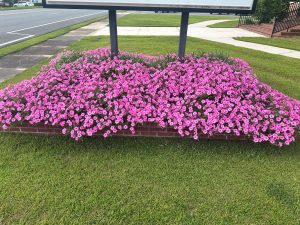
Supertunia Vista® Bubblegum® in mid-June 2025. Photo courtesy of Daniel Leonard.
There are several sub-series of Supertunia, all are good in my experience, but my favorite and the most resilient to heat is definitely the Vista® series, specifically the cultivar Vista® Bubblegum®. Vista® Bubblegum® is a massively growing Petunia that can spread in excess of 4’ and possesses vivid pink flowers with dark pink veins. Adding to the appeal of Vista Bubblegum is its self-cleaning nature, meaning no deadheading is required and it will flower more or less continuously throughout the life of the plant. However, the most outstanding aspect of the plant is its heat tolerance (for a Petunia). In general, Petunias in the Panhandle are planted in the fall, grow through the *usually* mild winter months, flower in the spring and then begin to languish in the heat of May-June. Vista® Bubblegum® chooses instead to laugh at the heat and mine (planted in early November) are still going strong, unfazed by the heat, in the second week of a very hot July. This plant just won’t quit. Pretty impressive stuff.
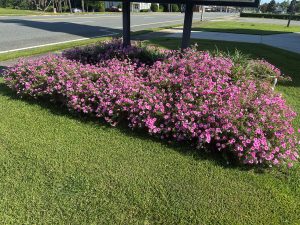
Supertunia Vista® Bubblegum® beginning to look a little tired in mid-July 2025 but still going strong! Photo courtesy of Daniel Leonard.
For best results with Vista® Bubblegum® and all other petunias, be sure to site in a location with full sun and keep regularly watered and fertilized, especially if grown in containers, as these prolific bloomers require a lot of energy to support the months-long flower show. Unfortunately, unless you already have Vista® Bubblegum® in your garden, you’ll have to wait until the fall to find more in nurseries, but these plants and its series siblings are well worth the wait! Plant a few this fall and enjoy beautiful color throughout next spring and summer.
For more information on growing petunias or any other horticultural topic, contact your local UF/IFAS Extension County office. Happy gardening!





















